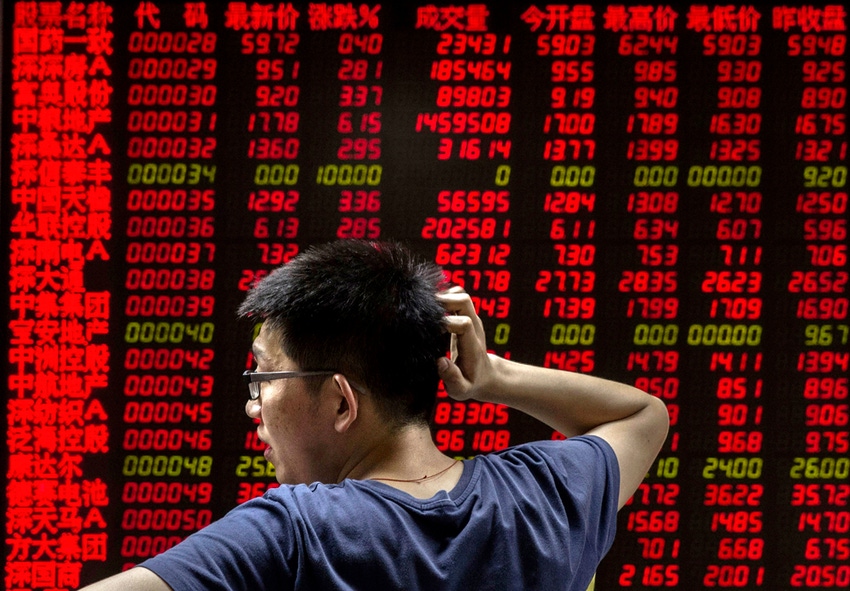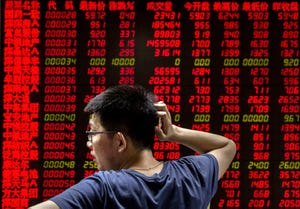When China growls, everyone gets heartburn
August 27, 2015

It’s not that I’m an impartial observer. Like everyone in the cattle business, my livelihood is determined to a fairly large degree by the price of cattle, the price of corn and the overall economy. And I know that it’s important to maintain perspective on the markets. However, perspective is a touchy thing to maintain when you have fed cattle on the show list or if you are two years from retirement and watched the value of your savings erode 10% in three days.
It’s easier for me maintain perspective because I have no cattle on feed; in fact, I’m not currently selling anything. And my position in the stock market would be considerably less than that of Warren Buffet’s. I’m waiting out the distiller market, but other than that, most of my feed sources are contracted through next spring. Perhaps that is why the flood of articles this week coming across my desk almost made me laugh.
It wasn’t that they weren’t well thought out, valuable or contained vital information that people need in creating their marketing decisions; it was simply that the markets are just absolutely brutal to individual players while remaining amazingly effective in the aggregate. Even in today’s world, where information is generally ubiquitous, free-flowing and within reach of everyone, it is still difficult to see the forest through the trees.
Take, for instance, the corn market. You would think, as we approach the end of August that we would have a really good read on corn acreage and yields. However, we are still getting mixed messages. Some areas were too wet and yields are disappointing, and some are going to produce all-time records. Thus we have a high degree of uncertainty about the two key components on the supply side – acreage and yields.
Then there’s the stock market, which is even more confusing. The expected economic recovery never happened as we seem mired in stagnation, deficit growth and entitlement spending that would embarrass Greece. Yet, at the same time we have seen the stock market climb to new highs, primarily because, despite all of our problems, there was little alternative for the world’s investment. We remained the best bet among a lot of bad alternatives.

BEIJING, CHINA - AUGUST 27: A Chinese day trader reacts as he watches a stock ticker at a local brokerage house on August 27, 2015 in Beijing, Chin. (Photo by Kevin Frayer/Getty Images)
Then there’s China. It has been a two-horse race for quite some time between China and the U.S. It may have been the most unholy of alliances, but China kept purchasing our debt so that we would keep purchasing their products. China’s task has always been monumental; maintaining state control while allowing some forms of capitalism to take place, manipulating its currency to purchase manufacturing and jobs away from the U.S. while needing the U.S. to be the largest purchaser of its wares.
China, with its population, its poverty and its growing middle class, has always been a tricky balance and their government has done an amazing job of creating an environment where growth could occur while still maintaining economic control. The world started to look at the Chinese economy the way the cattle industry looked at chicken—we just factored in solid and consistent growth year after year.
Of course, China had lots of untapped potential that helped, but eventually the realities of the global economy have even caught up with them. China’s latest attempt to purchase growth by devaluating its currency caused the markets to react; then came an ensuing panic and trillions have been removed from the valuation of the global economy. The cattle futures market, mostly taking its lead from other markets, has gone through its own free fall the last several weeks.
The bulls, though they are hard to find, argue that this is an overreaction. The bears argue that it’s the beginning of a race to zero as the whole system is on the verge of collapse. As is usually the case, the right answer is probably somewhere in between.
At times like these when the sky seems to be falling, there seems to be three main reactions. Those who head for the door; those would be the cattlemen who are frantically trying to price and sell everything they have. Then there are the stubborn people who insist that this is an overreaction and that things will stabilize. This is my natural tendency regardless of which direction the market is moving. They argue for stamina and waiting it out. The third are what I call joyfully oblivious. They just shrug and go about their day-to-day business saying that the market is too large and too unpredictable to worry about, it will be what it will be, and they do not take a position one way or the other. The great irony is that I suppose that each one is proven right about a third of the time.
An old mentor told me that relative to the cattle markets, one must manage risk, seize opportunity, plan, execute and maintain perspective. The good times are rarely as good as they seem, the bad times rarely as bad as they seem, and being a contrarian usually only pays at the peak or bottom of whatever cycle we are in; meaning the trend is your friend.

70+ photos showcasing all types of cattle nutrition
Readers share their favorite photos of cattle grazing or steers bellied up to the feedbunk. See reader favorite nutrition photos here.
I’m not saying that the Chinese situation might not cause a global depression that lasts for a decade. I’m not saying that USDA’s projection for a record 13.7 billion-bushel corn crop is not off by 2 billion bushels and that the market will rally. I’m not saying that millions of pounds of unexpected beef product will materialize and that beef demand will suddenly reverse and the market will lose 15% of its value by October. But my guess is that the smoke will eventually clear and that the fundamentals that drove the markets up to two weeks ago are still largely intact.
You might also like:
3 ways to improve next year's grazing today
7 U.S. cattle operations honored for stewardship efforts
7 tools to win the war against cattle flies
Burke Teichert: Are you a low-input, high-management rancher?
13 new utility tractors for the ranch in 2015
About the Author(s)
You May Also Like


.png?width=300&auto=webp&quality=80&disable=upscale)
